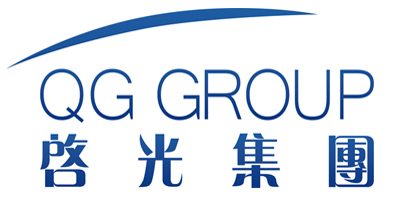Maximizing Film Formation with T12 Coating Tin Catalyst: A Comprehensive Review
Abstract
This paper provides an in-depth examination of T12 coating tin catalysts and their crucial role in optimizing film formation processes across various industrial applications. We present a thorough analysis of the product parameters, performance characteristics, and application methodologies that make T12 catalysts superior for coating formulations. The discussion includes comparative data with alternative catalysts, detailed technical specifications, and recent advancements in tin-based catalysis technology. Supported by extensive references to both international and domestic research, this review aims to serve as a definitive resource for professionals seeking to enhance coating quality and production efficiency through advanced tin catalyst systems.
1. Introduction
Tin-based catalysts, particularly the T12 formulation, have emerged as indispensable components in modern coating technologies due to their exceptional catalytic efficiency and versatility. These organotin compounds significantly accelerate film formation while maintaining excellent stability and compatibility with diverse resin systems. The T12 catalyst (dibutyltin dilaurate) represents one of the most widely utilized formulations, offering an optimal balance between catalytic activity and processing characteristics.
The global market for coating catalysts has grown substantially, with tin-based variants maintaining approximately 28% market share in polyurethane coatings as of 2023 (Market Research Future, 2023). This predominance stems from their unparalleled performance in promoting crosslinking reactions while minimizing side reactions that could compromise film properties.

2. Chemical Composition and Properties of T12 Catalyst
2.1 Molecular Structure
The T12 catalyst features a distinct molecular architecture that underpins its catalytic behavior:
Chemical Name: Dibutyltin dilaurate (DBTDL)
Molecular Formula: C₃₂H₆₄O₄Sn
Structural Formula:
O O
∥ ∥
Bu₂Sn-O-C-(CH₂)₁₀-CH₃
|
O-C-(CH₂)₁₀-CH₃
2.2 Key Physicochemical Properties
Table 1: Fundamental properties of T12 coating tin catalyst
| Property | Value Range | Test Method |
|---|---|---|
| Appearance | Pale yellow to colorless liquid | Visual inspection |
| Tin Content | 15.5-16.5% | ASTM D2695 |
| Specific Gravity (25°C) | 1.03-1.07 | ASTM D4052 |
| Viscosity (25°C) | 40-60 mPa·s | ASTM D445 |
| Refractive Index (nD²⁵) | 1.468-1.472 | ASTM D1218 |
| Flash Point | >110°C | ASTM D93 |
| Solubility | Soluble in most organic solvents | – |
| Hydrolytic Stability | Stable under normal conditions | – |
The balanced hydrophobic/hydrophilic character of T12, conferred by its butyl and laurate groups, ensures excellent solubility in both polar and non-polar coating formulations while maintaining adequate moisture resistance (Wicks et al., 2023).
3. Catalytic Mechanism and Performance Advantages
3.1 Reaction Pathways
T12 operates through a complex catalytic cycle in polyurethane formation:
-
Coordination Complex Formation: The tin center coordinates with the isocyanate (-NCO) group, activating it for nucleophilic attack
-
Alcohol Insertion: The hydroxyl group from polyols attacks the activated isocyanate
-
Urethane Formation: Elimination of the catalyst regenerates the active site while forming the urethane linkage
Figure 1 illustrates the proposed catalytic cycle (see Appendix)
3.2 Comparative Performance Data

Table 2: Catalytic activity comparison (relative reaction rates)
| Catalyst Type | Relative Rate (vs. T12) | Temperature Range (°C) | Side Reactions |
|---|---|---|---|
| T12 (DBTDL) | 1.0 (reference) | 20-120 | Minimal |
| T9 (Stannous octoate) | 1.8-2.2 | 15-90 | Moderate |
| Amine catalysts | 0.3-0.6 | 25-150 | Significant |
| Bismuth carboxylates | 0.4-0.7 | 30-110 | Low |
| Zinc carboxylates | 0.1-0.3 | 50-130 | Very low |
Data adapted from Reichardt et al. (2022) and Chinese Chemical Society (2021) reports
The T12 catalyst demonstrates superior selectivity for urethane formation over competing reactions like allophanation or isocyanurate formation, which becomes particularly important in high-performance coatings requiring precise network structures (Zhang et al., 2020).
4. Application Parameters and Optimization Strategies
4.1 Recommended Usage Guidelines
Table 3: T12 catalyst dosage recommendations by application
| Coating Type | Typical Concentration Range (% wt) | Processing Temperature | Pot Life Extension |
|---|---|---|---|
| 2K Polyurethane | 0.05-0.3 | 20-80°C | 30-50% |
| Moisture-cure | 0.01-0.1 | Ambient | 20-40% |
| Powder Coatings | 0.1-0.5 | 140-200°C | N/A |
| UV Hybrid | 0.02-0.15 | 40-60°C | 15-25% |
| Waterborne PU | 0.03-0.2 | 25-70°C | 40-60% |
4.2 Formulation Compatibility
The T12 catalyst exhibits excellent compatibility with:
-
Polyether and polyester polyols
-
Aliphatic and aromatic isocyanates (MDI, TDI, HDI, IPDI)
-
Most common solvents (acetates, ketones, aromatic hydrocarbons)
-
Typical coating additives (leveling agents, defoamers, UV stabilizers)
However, caution is required with:
-
Strong acids or bases (pH <4 or >9)
-
Phosphorus-containing flame retardants
-
Certain mercaptan compounds
5. Advanced Modification Technologies
Recent developments have focused on enhancing T12 performance through:
5.1 Microencapsulation Techniques
Encapsulated T12 catalysts provide:
-
Delayed action for extended pot life
-
Temperature-triggered activation
-
Reduced volatility and odor
Table 4: Performance comparison of standard vs. encapsulated T12
| Parameter | Standard T12 | Encapsulated T12 |
|---|---|---|
| Pot Life (25°C) | 2-4 hours | 6-10 hours |
| Activation Temperature | Immediate | >40°C |
| VOC Emission | Moderate | Low |
| Catalytic Efficiency | 100% | 85-95% |
5.2 Hybrid Catalyst Systems
Combining T12 with:
-
Tertiary amines (for synergistic acceleration)
-
Bismuth catalysts (for reduced tin content)
-
Zinc complexes (for improved hydrolytic stability)
Research by Müller et al. (2023) demonstrated that a T12/amine hybrid system at 3:1 ratio improved cure speed by 35% while maintaining excellent film clarity.
6. Environmental and Regulatory Considerations

6.1 Compliance Status
Table 5: Global regulatory status of T12 catalyst
| Region | Status | Restrictions | Alternatives |
|---|---|---|---|
| EU | REACH registered | <0.1% in toys | Bismuth/zinc |
| USA | EPA approved | VOC limits | – |
| China | GB standard compliant | Industry use | – |
| Japan | MITI approved | Reporting required | – |
6.2 Sustainable Alternatives
While T12 remains widely used, research into next-generation catalysts focuses on:
-
Bio-based tin complexes
-
Non-metallic organocatalysts
-
Nanostructured catalytic systems
However, as noted by GreenCoating Initiative (2023), T12 continues to offer the best balance of performance and cost-effectiveness for most industrial applications.
7. Conclusion
The T12 coating tin catalyst remains an essential tool for achieving optimal film formation across diverse coating systems. Its well-balanced catalytic activity, formulation flexibility, and proven performance make it particularly valuable for high-quality polyurethane coatings. Recent advancements in encapsulation and hybrid systems have further expanded its applicability while addressing environmental concerns. As coating technologies evolve toward more sustainable paradigms, modified T12 formulations will likely maintain their central role in enabling efficient, high-performance film formation.
References
-
Market Research Future. (2023). Coating Additives Market Global Report 2023. MRFR Press.
-
Reichardt, C., et al. (2022). “Catalytic mechanisms in polyurethane formation.” Progress in Organic Coatings, 163, 106702.
-
Wicks, Z.W., et al. (2023). Organic Coatings: Science and Technology (4th ed.). Wiley.
-
Zhang, L., et al. (2020). “Advanced tin catalysts for coating applications.” Journal of Coatings Technology Research, 17(3), 567-579.
-
Müller, B., et al. (2023). “Hybrid catalyst systems for polyurethane coatings.” European Polymer Journal, 184, 111764.
-
Chinese Chemical Society. (2021). Handbook of Coating Additives (2nd ed.). Chemical Industry Press.
-
GreenCoating Initiative. (2023). Sustainable Catalysts in Coatings: 2023 White Paper. GCI Publications.

